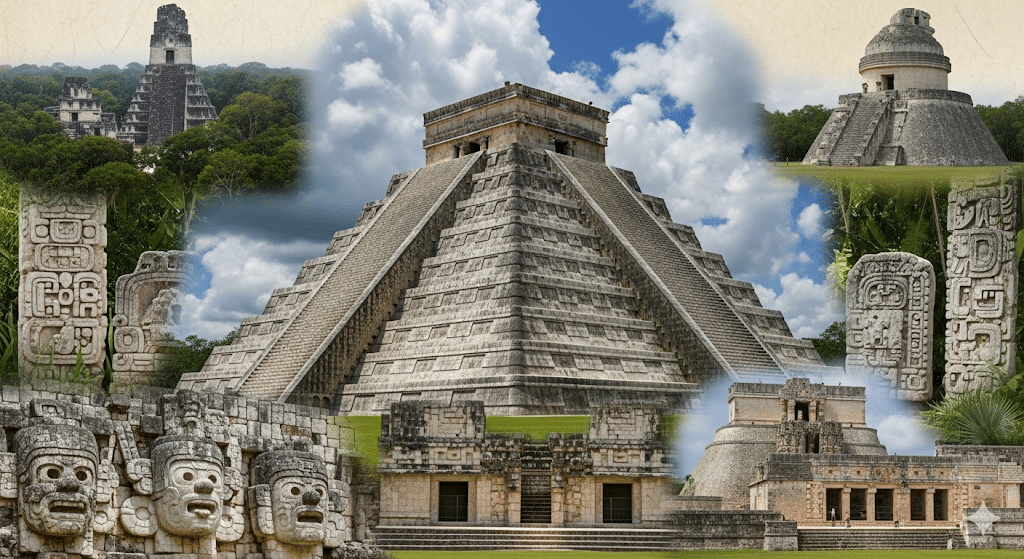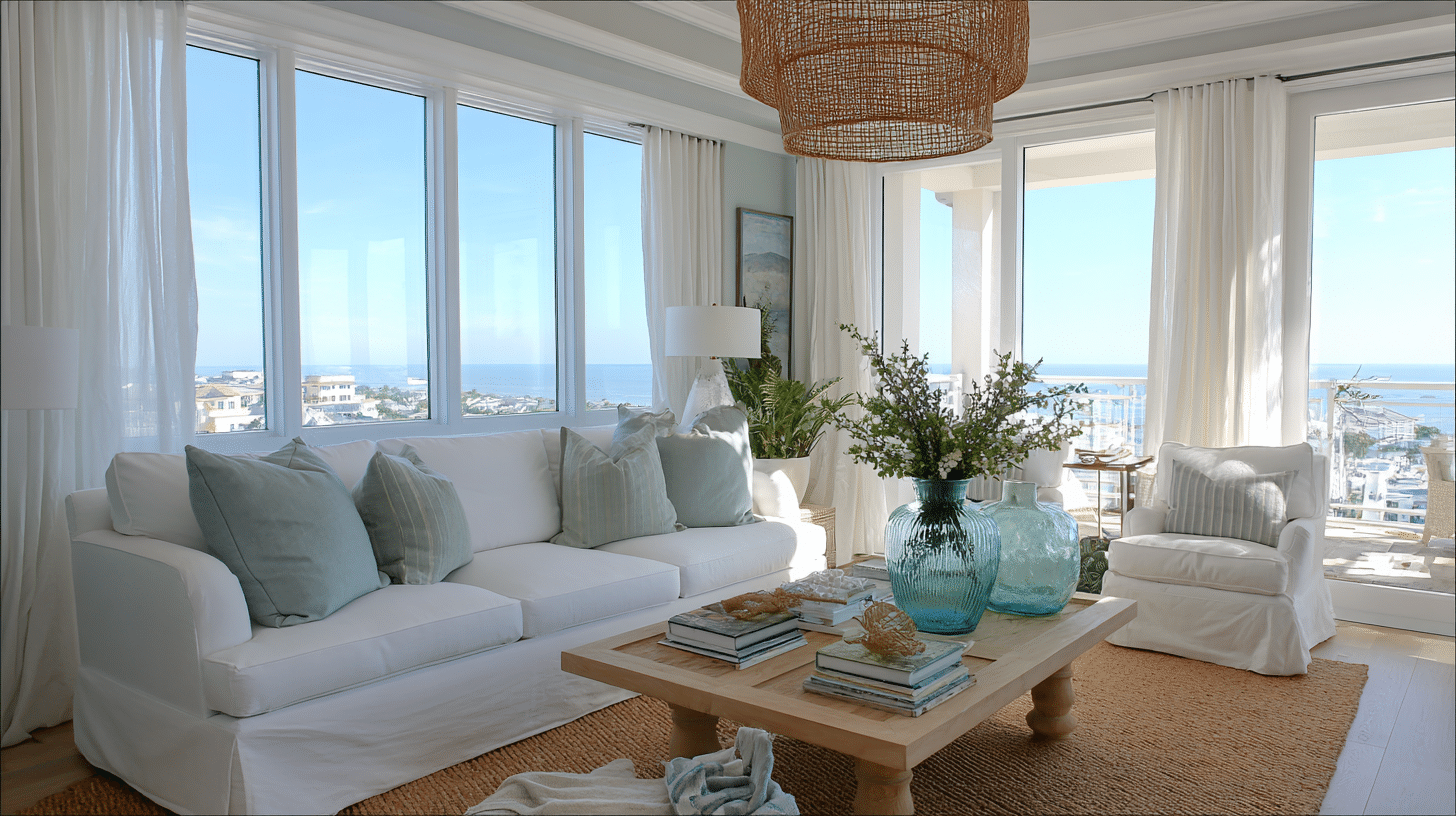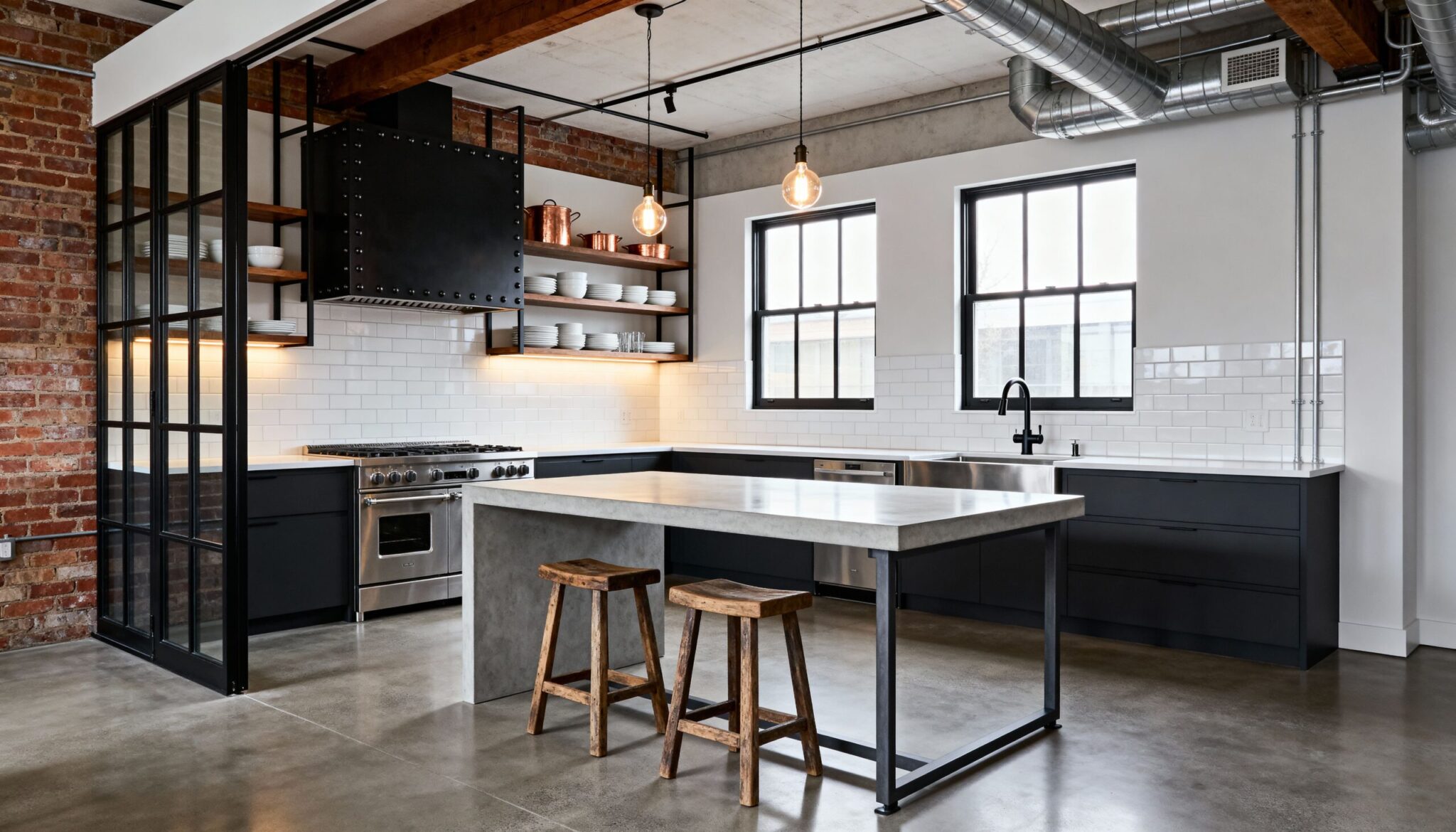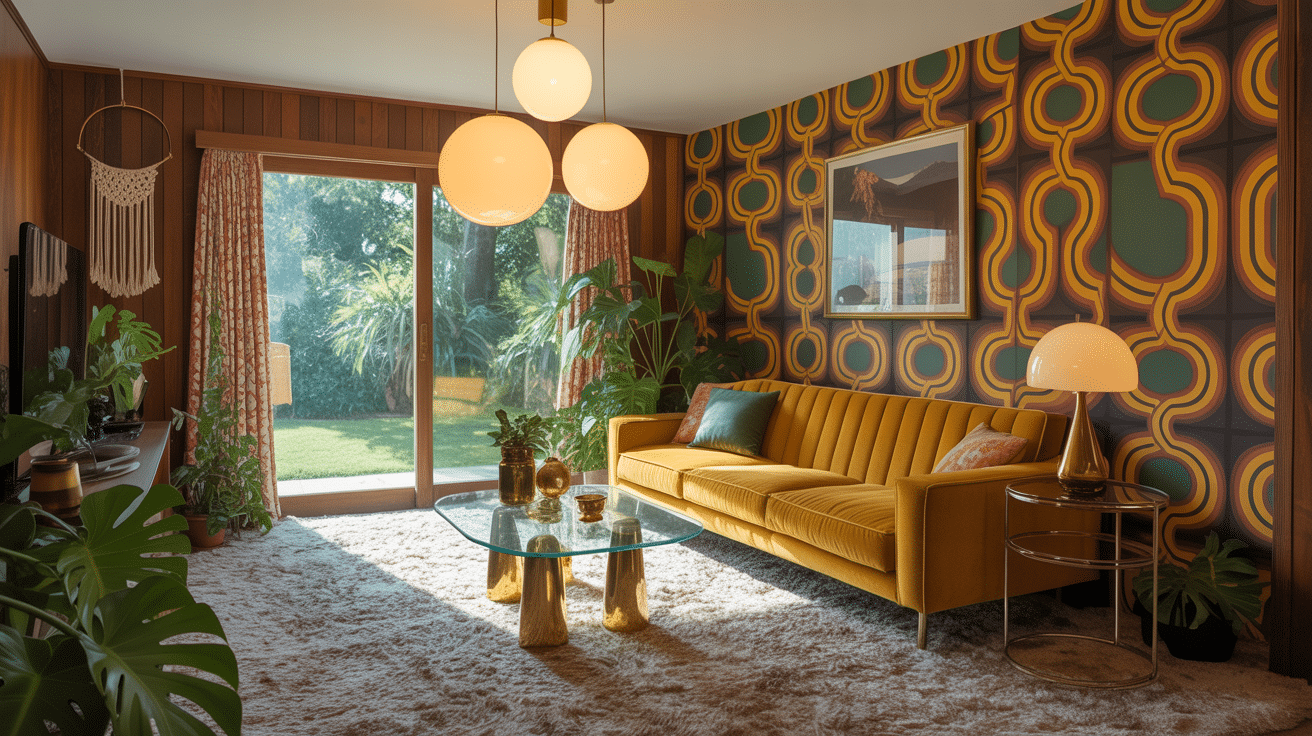Looking at the magnificent ruins of Chichen Itza or Tikal, you might remember all those 2012 doomsday predictions about the Maya calendar. Well, we’re all still here! And these ancient builders created masterworks that outlasted their own civilization.
Maya architecture isn’t just about old stones and pyramids. It’s a story of human geniuses that continues to teach us today.
This blog will show how Maya builders developed their techniques over centuries. You’ll learn secrets for creating structures that have survived earthquakes, hurricanes, and the test of time itself.
We’ll cover key construction periods, building methods, and design principles. You’ll see why this architecture remains one of humanity’s greatest achievements.
Historical Background
The Maya civilization thrived in Mesoamerica for over 2,000 years, leaving behind a remarkable legacy of architectural achievements.
Around 2000 BCE, early communities built simple platforms and ceremonial spaces.
By the Classic period (250–900 CE), Maya buildings had reached their peak, featuring pyramids, palaces, ball courts, and intricate carvings in cities such as Tikal, Palenque, and Copán.
Builders mastered the art of crafting limestone blocks, corbel arches, and intricate designs.
In the Postclassic era (900–1500 CE), sites such as Chichen Itza blended Maya traditions with central Mexican influences. Even after the Spanish conquest, many structures lay hidden in jungles, preserving a legacy of innovation and cultural expression.
Key Styles, Iconic Structures, and Design Elements of Maya Architecture
Mayan architecture evolved through distinct periods, each with unique characteristics. The Preclassic period was characterized by simple platforms and basic temples. Classic period builders introduced steep pyramids with elaborate facades.
The Postclassic era introduced more complex designs, featuring wider staircases and a greater variety of decorative elements. Regional styles also emerged across different Maya territories.
The Petén style emphasized tall pyramids with narrow bases. Rio Bec architecture featured false temple towers. Puuc-style buildings showcased smooth stone veneers and geometric patterns.
1. El Castillo at Chichen Itza
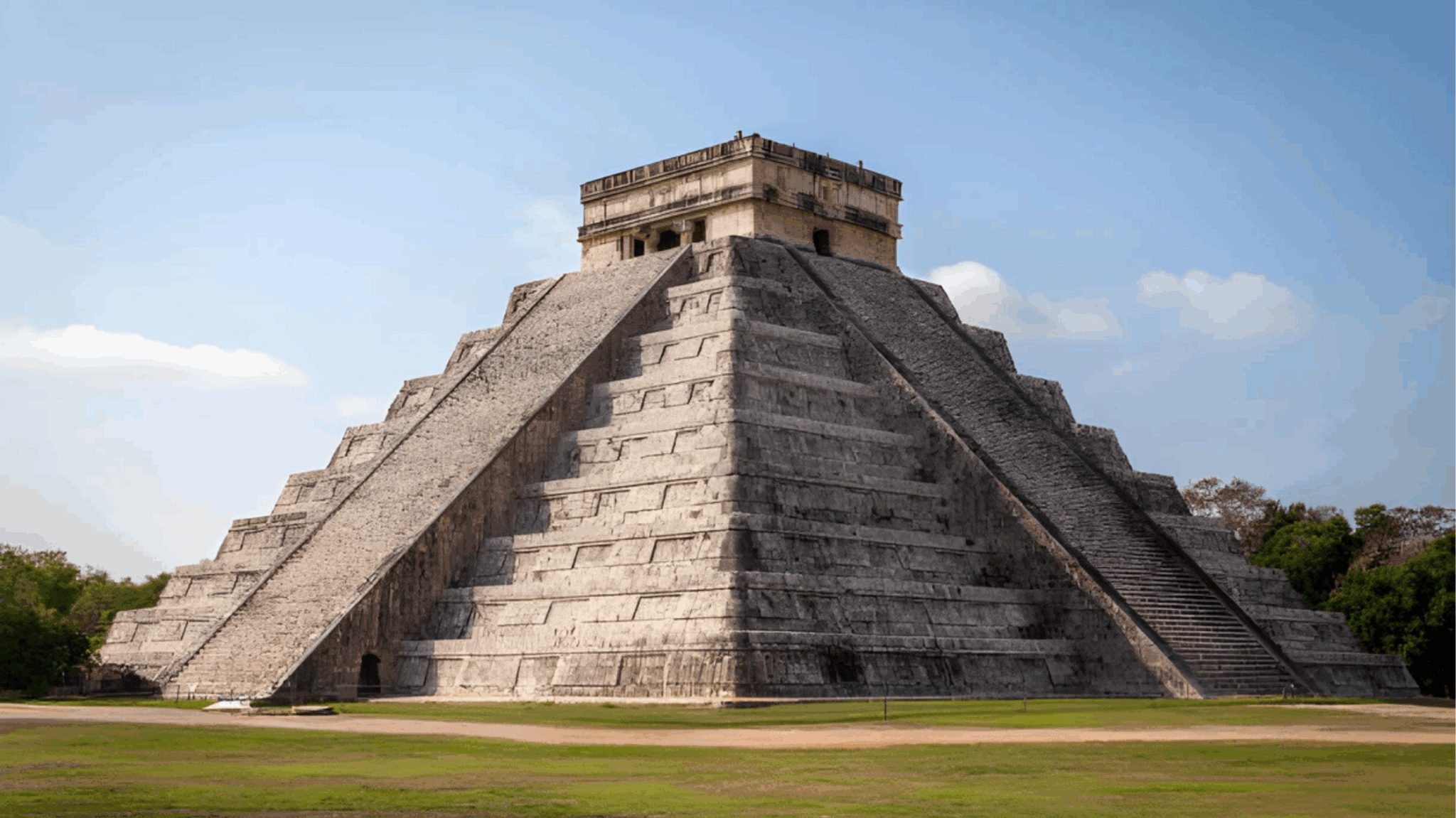
This 79-foot pyramid stands as the most recognizable Maya structure in the world. Built during the Late Classic period, it demonstrates the Maya’s advanced understanding of astronomy and mathematics.
The pyramid served as both a temple to Kukulkan and a massive stone calendar.
Key Features:
- 365 Steps: Each step represents one day of the solar year
- Equinox Phenomenon: Shadows create a serpent descending the pyramid twice yearly
- Acoustic Properties: Handclaps at the base produce echo sounds resembling a quetzal bird call
- Four Staircases: Each contains 91 steps, plus the top platform, totaling 365
- Mathematical Precision: Perfect alignment with cardinal directions
2. Temple IV at Tikal
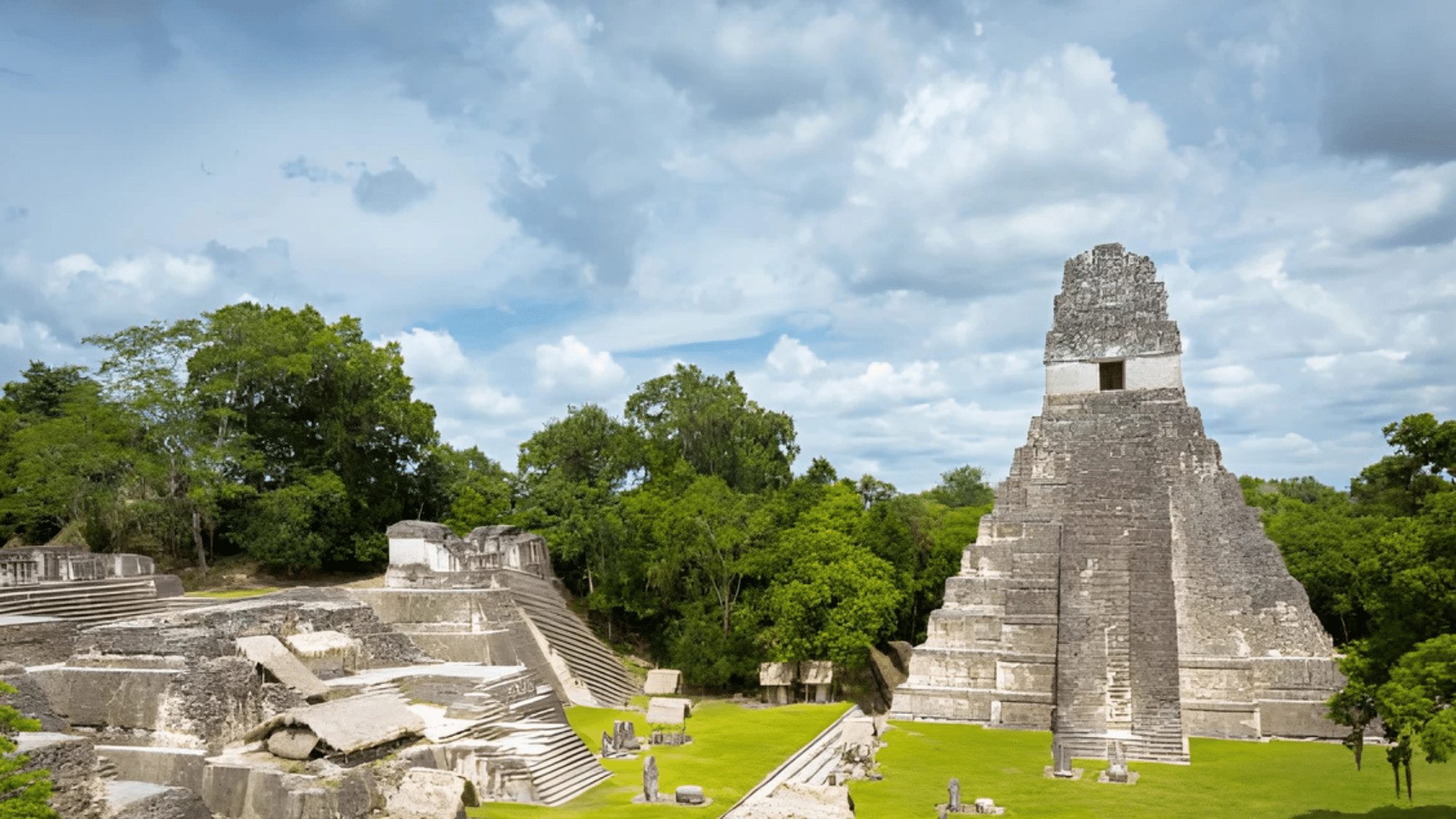
Standing 213 feet tall, Temple IV dominated the ancient Maya landscape as one of the tallest structures in the pre-Columbian Americas.
This massive pyramid-temple complex showcases the engineering capabilities of Classic-period Maya builders. Maya buildings like this served multiple purposes beyond religious ceremonies.
Notable Characteristics:
- Record Height: Tallest structure at Tikal and among the highest Maya buildings
- Construction Date: Built around 741 CE during Tikal’s golden age
- Wooden Lintels: Original carved wooden beams still survive today
- Observatory Function: The Top platform is used for astronomical observations
- Royal Tomb: Contains burial chambers of Tikal’s rulers
3. Palace at Palenque
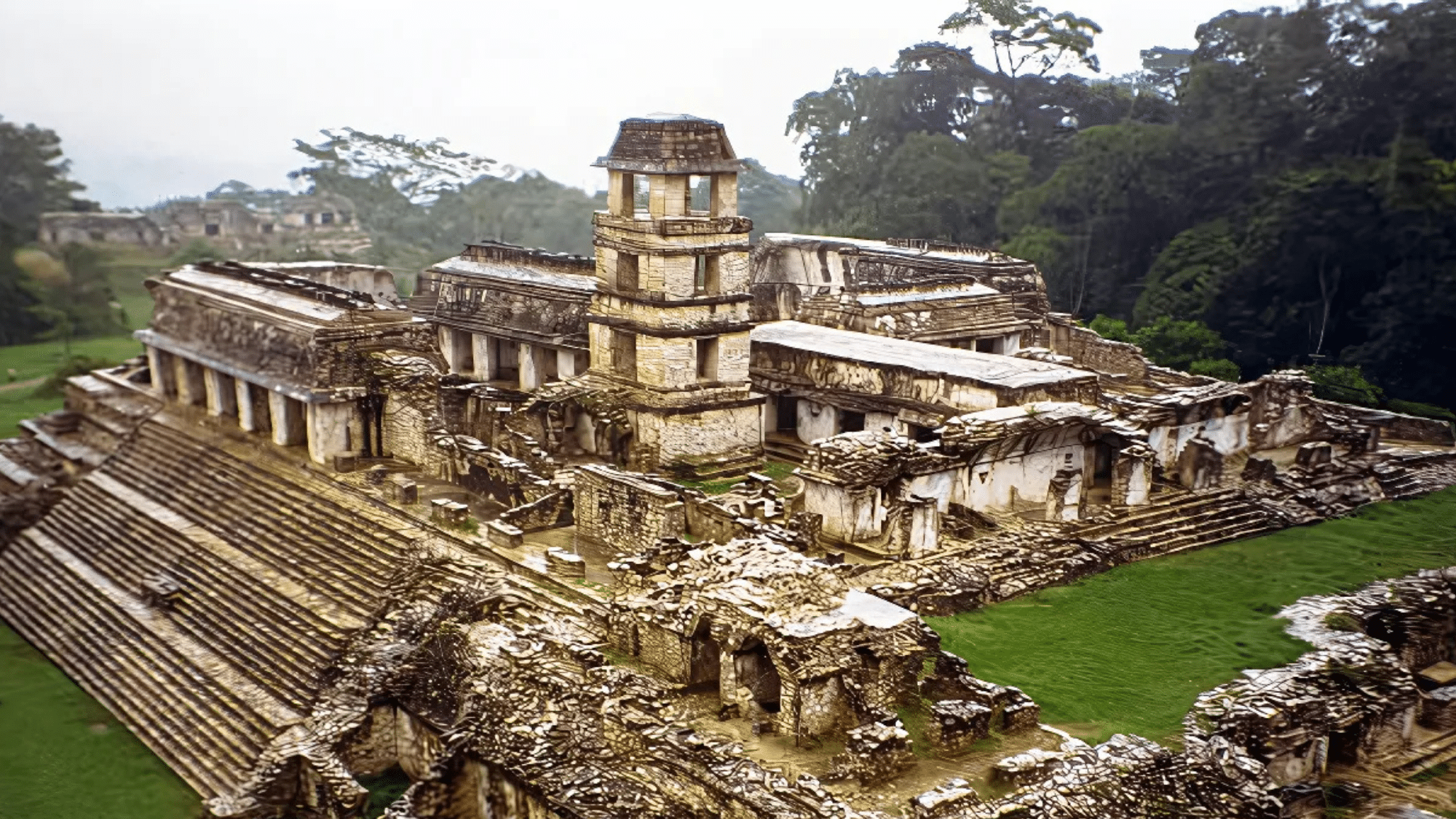
The Palace represents Maya residential architecture at its finest.
This multi-building complex housed royal families and served as the administrative center of Palenque. Its unique four-story tower and underground water systems show advanced urban planning skills.
Architectural Highlights:
- Multi-Story Design: Rare example of Maya buildings with multiple levels
- Corbel Vaulting: Smooth arch construction throughout the complex
- Tower Observatory: Four-story structure for astronomical studies
- Water Management: Underground aqueducts and drainage systems
- Decorative Panels: Intricate stone carvings portraying royal history and Maya mythology
Essential Design Elements
1. Corbel Arch Construction
- Stones overlap progressively inward
- No keystone required
- Creates distinctive pointed archways
- Allows for wide interior spaces
2. Stepped Pyramid Design
- Multiple levels representing cosmic layers
- Platforms for ceremonial activities
- Integration with natural landscape features
3. Decorative Stone Work
- Giant stone faces of gods and rulers adorned temple facades
- Complex mathematical designs covered walls and corners
- Carved texts recorded historical events and royal genealogies
- Tall decorative crests added height and grandeur to temple tops
- Intricate patterns covered entire building facades with detailed designs
4. Earthquake Resistance:
- Flexible stone joints absorbed seismic movement
- Deep foundations spread the weight evenly
- Interlocking stone blocks created stability
- Pyramid shapes kept a low, stable center of gravity
5. Hurricane & Weather Protection:
- Sloped walls deflected wind and rain
- Dense limestone resisted erosion
- Drainage channels protected foundations
- Thick stone walls withstood extreme weather
These elements combined to create structures that were both functional and deeply symbolic, reflecting Maya beliefs about the cosmos and their place within it.
The Cultural, Religious, and Astronomical Significance
Maya architecture served far more than just shelter or decoration. Every structure reflected their deep spiritual beliefs and scientific knowledge. Pyramids represented sacred mountains connecting the earth to the heavens.
Temples housed gods and served as stages for religious ceremonies that maintained cosmic balance.
The Maya viewed their buildings as living entities. They performed dedication rituals, buried offerings within foundations, and oriented structures toward celestial events. Ball courts represented the underworld, where gods played to determine the fate of humans.
Maya buildings reflected astronomical precision, aligning with solstices, equinoxes, and planetary cycles.
Windows marked star positions, staircases echoed calendar days, and architecture guided priests in predicting eclipses, tracking seasons, and timing festivals.
The Enduring Legacy and Modern Influences
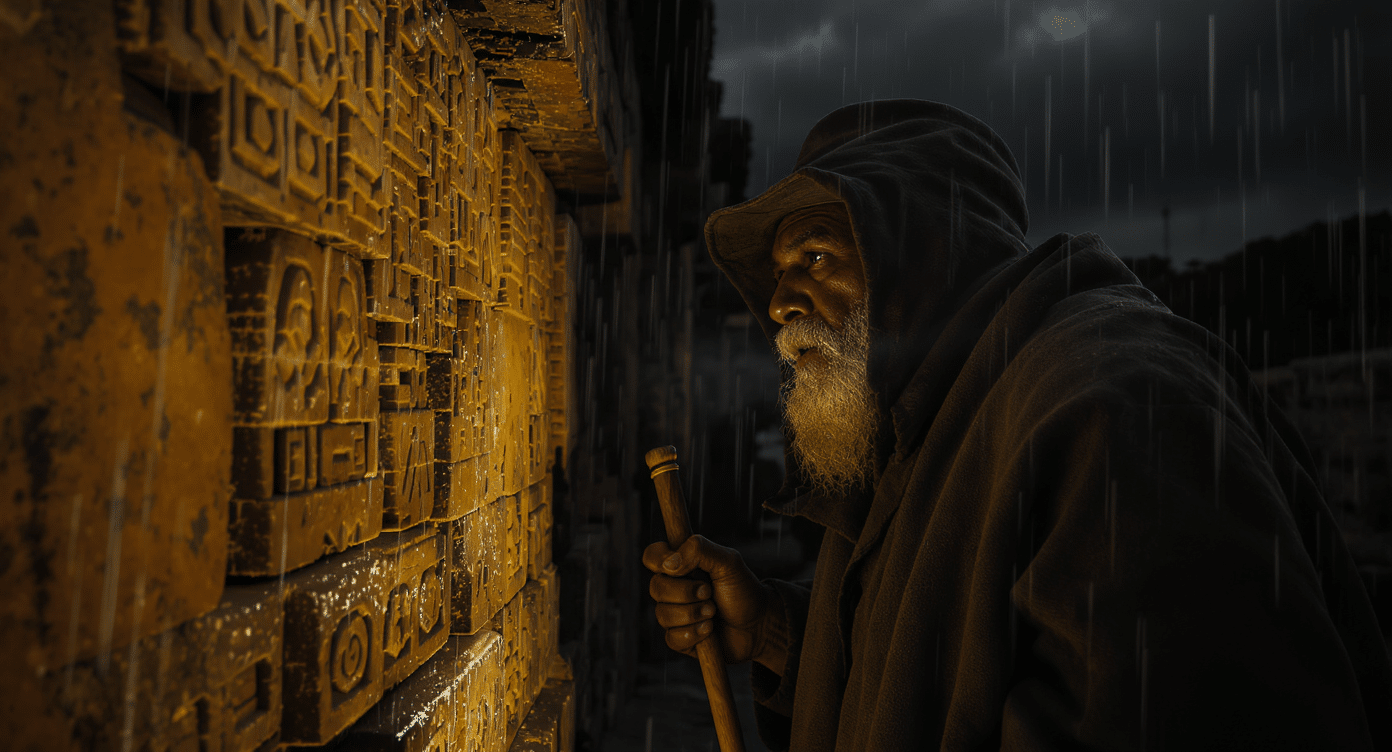
For modern Maya descendants, their structures remain a powerful connection to their heritage.
As a K’iche’ Maya elder has said, “Our pyramids and temples are not just stone; they are the heartbeat of our ancestors, still speaking to us, guiding us to remember who we are and where we come from.”
1. Preservation Challenges
Despite their robust construction, Maya sites face threats from jungle overgrowth, erosion, and climate change. UNESCO protections help preserve iconic locations like Tikal and Chichen Itza.
2. Influence on Later Cultures
Maya architecture influenced the development of Toltec and Aztec cities, such as Tenochtitlán and Xochicalco, through techniques like Talud-tablero construction and pyramid designs, thereby spreading Mesoamerican architectural traditions.
3. Modern Architectural Inspiration
Builders such as Frank Lloyd Wright and Robert Stacy-Judd drew inspiration from Maya architecture in the Maya Revival style, incorporating corbelled arches and geometric motifs into their 20th-century buildings.
4. Construction Innovations
Maya techniques, including burnt-lime mortar and concrete foundations, laid the groundwork for modern construction, demonstrating durable building methods still relevant today.
5. Cultural and Tourism Impact
Sites like Chichen Itza, a New Seven Wonder, attract global visitors, boosting tourism while offering insights into Maya cosmology and sustainable design for modern urban planning.
Finishing It Up
These structures are different. They were meant to last. Built to speak across centuries, until stone becomes story and ruins become meaning.
They are the buildings that carry the Maya’s voice; impressing scholars, humbling travelers, and reminding the world of a civilization’s brilliance.
This is the Maya Architecture playbook. It is worth remembering. Worth protecting. Worth the expedition. Forget the rest.
Keep these cities in mind. The Maya already said enough.

